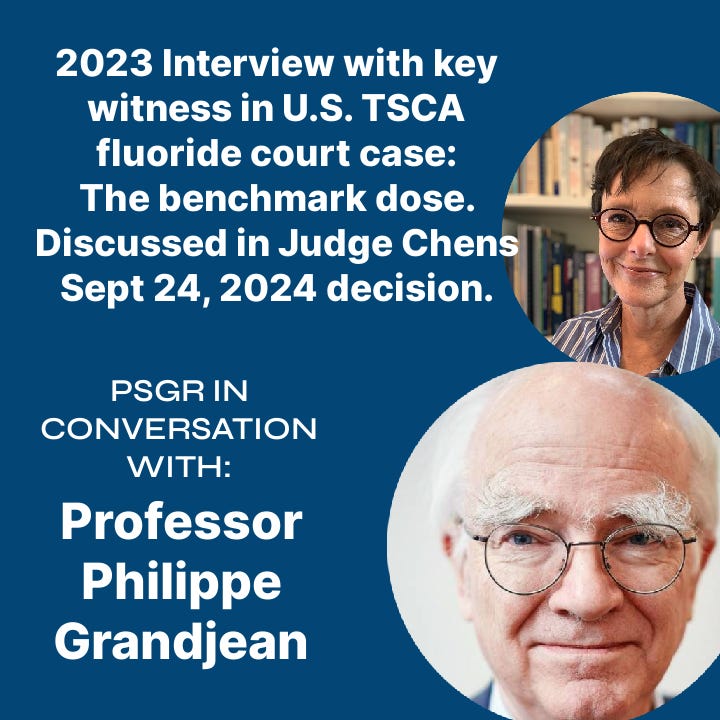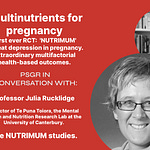IMPLICATIONS FOR NEW ZEALAND
New Zealand and U.S. authorities have never risk assessed fluoride for safety.
A U.S. court decision paper shows us how it is done. Why can’t our authorities?
Food & Water Watch, Inc., et al., (plaintiffs) v. United States Environmental Protections Agency, et al. (defendants). United States District Court. Northern District of California. Case 3:17-cv-02162-EMC. Judge Edward M. Chen.
Lead attorney for the plaintiffs: Michael Connett.
“The judge did what EPA has long refused to do, and that is to apply the EPA standard risk assessment framework to fluoride,” said Michael Connett, attorney for the plaintiffs
Food and Water Watch: In response to our lawsuit, the court found that the risks of adding fluoridation are unreasonable and, therefore, “sufficient to require the EPA to engage with a regulatory response.” As a result, it ruled that the agency must act to strengthen these regulations.
Last year PSGRNZ interviewed key witness Professor Grandjean on YouTube. However, we believe this interview is so important it needs to be even more accessible, today we release it as a podcast with a transcript (on Spotify too!) so you can listen more easily.
We believe that this interview with Professor Philippe Grandjean - and Judge Chen’s decision are so important that the key points should be understood by all people involved in some way, in New Zealand’s fluoridation-of-drinking-water controversy.
This is the first case to be brought under the Toxic Substances Control Act (TSCA), legislation which empowers citizens to petition the EPA to consider whether a chemical presents an unreasonable risk of injury to health.
To understand the New Zealand fluoride in drinking water situation: Fluoride Timeline.
The deliberation of Justice Chen in the U.S. Federal court case entirely revolves around the necessity to apply the U.S. Environmental Protection Agency’s (US EPA) standard risk assessment framework.
Yes, the defendant is the US EPA - but the justice’s deliberation provides a language around the processes of risk assessment (RA) which the US EPA failed to do - but which has also been outside the scope for New Zealand authorities for decades.
New Zealand’s courts could have asked the question - when was risk assessment undertaken and what other issues are at stake? But judges have narrowly interpreted the law.
Rolling RA processes seek to identify how a product might be toxic, the level or dose that the product is toxic, the routes of exposure, the total exposure, and then the margin between what is safe - while allowing for a margin that would ensure that those most vulnerable, and likely most exposed, would be safe from a toxic level.
Process is key. This includes impartial and transparent selection of evidence.
When New Zealand society consider the thoroughness and completeness of the Judge’s 80-page document, and then identify that the New Zealand 2014 and 2021 research claiming the safety of fluoridation of drinking water lacked even a methodology - a systematic review to ensure that there was no bias nor predetermination in the approach of authorities, there can be only one conclusion.
The action of New Zealand authorities to set aside the public law convention while pretending to claim safety, is a betrayal of trust of good process.
The Ministry of Health and the Prime Minister’s Chief Science Advisers and their staff did not try to assess background exposure sources include ‘naturally occurring fluoride in food and beverage, fluoride in food and beverage made with fluoridated water, and other products, like toothpaste.’ (Chen 33/80)
Indeed, the one study on urinary fluoride levels has been comprehensively ignored.
The New Zealand Environmental Protection Authority (NZ EPA) has also stepped away from any human or environmental fluoride risk assessment, which might identify any of this information. Evaluative risk assessment is so rare, it is not clear that it the NZ EPA has sufficient expertise to take on such a task.
Is fluoride a medicine? The courts can elect to follow an ethics framework so as to ensure the statutory purpose is fulfilled. Balance the efficacy, a marginal reduction in cavities, with other risks. Fluorosis, arthritis, neurodevelopmental and IQ, fractures…
Sequential court cases (link through our timeline) reveal how judges in New Zealand persistently shy away from placing appropriate weight on the issue at stake - that children are exposed to a developmental neurotoxicant. Plaintiffs seeking judicial review have been left struggling to formulate complex arguments around the narrow points of statute that the courts limit themselves to considering.
Uncertainty has been flipped to weight oral and dental and downweigh all other risks except fluorosis. Yet legal judgement must navigate uncertainty and weigh all harms. Judges can actively enquire if they consider that the statutory purpose may be being undermined. There seems to be no public health language in the courts for uncertainty in not exposing a population to a medicine.
Nor have, alarmingly, the courts, or any experts in Constitutional law, drawn attention to the terrible wording of the selective provision S116, that Ministry officials themselves drafted. S116 contains no mention of ‘safety’ nor of any concept of risk and the requirement to judge risk of a chemical that was being added to drinking water for an alleged medical benefit, for therapeutic purpose, that people would then have no capacity to resist.
The absence of any mention of safety is startling. Two committees, a Health Select Committee in 2016, and an Inquiry Committee in 2021 - comprehensively dismissed public concerns about the safety of fluoridated drinking water.
Despite people’s concerns about the safety of fluoridation - a requirement to conduct scientifically robust risk assessment was not drafted into S116E of the Health Act 1956. The sole obligation was to reduce a degree of prevalence and severity of cavities - but no risk assessment at all was required to judge any health benefits against any health risks. The financial costs that would be considered were narrowly formulated.
Knowledge of fluoride’s toxic potential has been accumulating for at least 80 years.
Fluoride Free New Zealand stated: In all, this judgment confirms what Fluoride-Free NZ has been saying for 20 years. Water fluoridation is not safe and needs to be stopped immediately. That is what the reliable science says and has always said.
In recent talks to Tauranga City Council in 2023 and 2024, Jodie Bruning of PSGR explained to Councillors, many problems with current reasoning by the Director-General (D-G) of Health concerning the evidence on the safety of fluoride.
Much of the PSGRs concern relates to authorities stating fluoridation is safe without undertaking formal risk assessment. There has been no risk assessment, and the ‘science’ used by the D-G of health is unfit for purpose.
The U.S. judgement provides an example of considered, careful deliberation and provides a strong contrast to recent New Zealand judgements where the courts have been consistently reluctant to weight different forms of risk. Instead, and most recently, a judge reacted scathingly to the civil society groups who have attempted to get authorities to seriously consider the relevant consideration of potential reduced IQ from exposure to fluoridated water in the first decade of life.
We strongly urge that you read Judge Chen’s decision.














